Three Epic Meteor Showers Are About to Light Up the July Skies
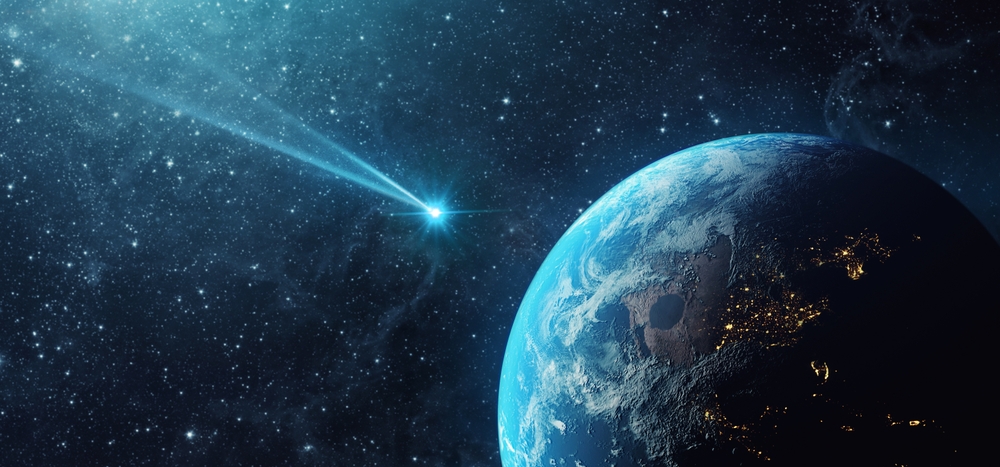
Every so often, the universe writes a message in light, streaking across the canvas of the night. These fleeting flashes meteors are not random fireworks but ancient cosmic echoes, bits of dust and stone older than human memory, burning brilliantly for mere seconds before vanishing into darkness.
This July, Earth will pass through not one, but three distinct streams of celestial debris, setting the stage for an extraordinary light show: the Alpha Capricornids, the Southern Delta Aquariids, and the mighty Perseids. Two of these showers will peak on the same night an uncommon convergence that hasn’t graced the sky in years. And while some meteors will arrive as quiet glimmers, others will blaze across the heavens as glowing fireballs, powerful enough to outshine the planets.
You don’t need a telescope. You don’t even need to know a single constellation. All you need is a dark sky, a moment of stillness, and the willingness to look up.
Why We Look Up
Long before city lights drowned out the stars, ancient civilizations mapped their myths in the sky. They followed the movement of planets, traced gods through constellations, and read omens in falling stars. Today, our understanding of astronomy has evolved, but our instinct to look up—especially when meteors light the sky remains deeply human.
There’s something primal in the sight of a meteor. It reminds us that we are not separate from the cosmos but part of it. These flashes of light connect us to a much larger rhythm the Earth rotating, orbiting, intersecting with trails left by ancient comets. In those moments, we’re not just spectators; we’re participants in a cosmic choreography billions of years in the making.
One of the Best Meteor Showers of the Year Is About to Begin—and It Can Be Seen Across the U.S. https://t.co/ejrVb2CS35 pic.twitter.com/MQqApELoxH
— Terri Nakamura (@terrinakamura) July 14, 2025
Meteor showers offer more than scientific intrigue they offer perspective. When we see a meteor streak across the night, it breaks time wide open. That piece of dust may have come from a comet that last visited Earth before the pyramids were built. What we witness in seconds is a journey that has lasted millennia.
For many, these celestial displays spark reflection: on the passage of time, on the brevity of life, on the beauty found in impermanence. A meteor’s brilliance lies not in how long it lasts, but in the fact that it appears at all. It becomes a metaphor one we recognize without needing words.
That’s why we gather on rooftops, lie in fields, and drive for hours just to find a patch of dark sky. We look up not just to witness the stars fall, but to remember something essential: that even the smallest fragment of the universe can light up the darkness.
What Are Meteor Showers, Really?
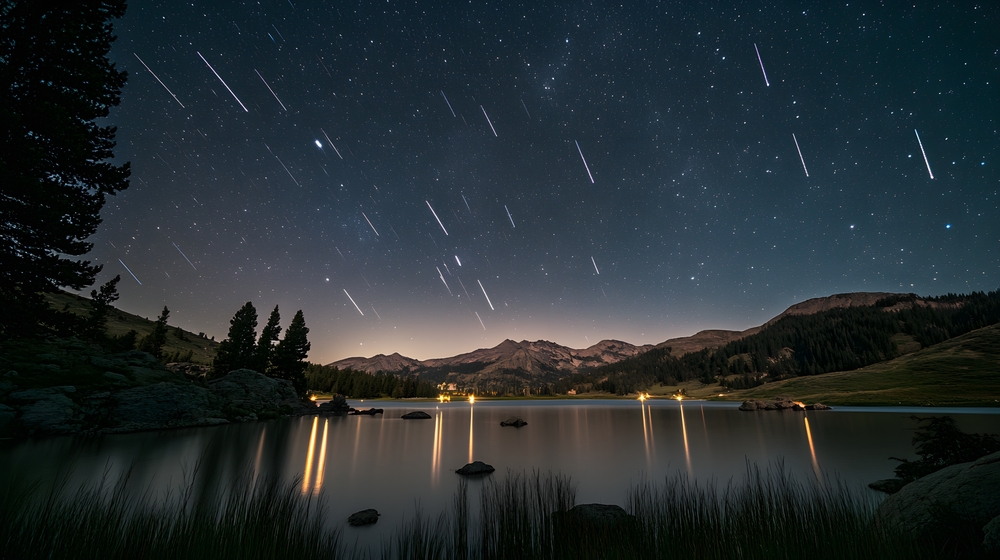
Meteor showers are not random phenomena. They are the result of Earth’s annual journey through space intersecting with trails of cosmic debris. These trails, left behind by comets or fragmented asteroids, are composed of tiny particles, often no larger than grains of sand. When Earth crosses one of these streams, the particles plunge into our atmosphere at incredible speeds (up to 37 miles per second) and burn up from friction, producing the glowing streaks we see as meteors.
Each meteor shower we observe is linked to a specific parent body. For example, the Perseids come from Comet Swift Tuttle, which orbits the sun every 133 years. The Alpha Capricornids originate from Comet 169P/NEAT, while the Southern Delta Aquariids trace back to Comet 96P/Machholz. These comets, in their repeated paths around the sun, leave behind dust trails that Earth encounters with regularity each year.
The “radiant” of a meteor shower, the point in the sky from which meteors appear to emerge, is a visual effect created by perspective. Just as a highway seems to converge at the horizon, meteor paths appear to fan out from a single point. Despite their radiant origins, meteors can streak across any part of the sky.
Not all meteors are the same. Their speed, brightness, and appearance vary depending on the shower. The Alpha Capricornids are slow and dramatic, often producing fireballs. The Southern Delta Aquariids are faster and fainter, better appreciated from dark-sky locations. The Perseids are swift and prolific, leaving behind long, luminous trails that captivate even casual observers.
While the science is precise, the experience remains deeply visceral. A meteor shower is Earth’s brief encounter with the remnants of ancient wanderers. What seems like a quick flash is the end of a cosmic journey that began millions of miles away. When we look up, we are not just seeing a meteor. We are witnessing the collision of time, motion, and matter in the most elegant way nature allows.
July’s Meteor Shower Line-Up
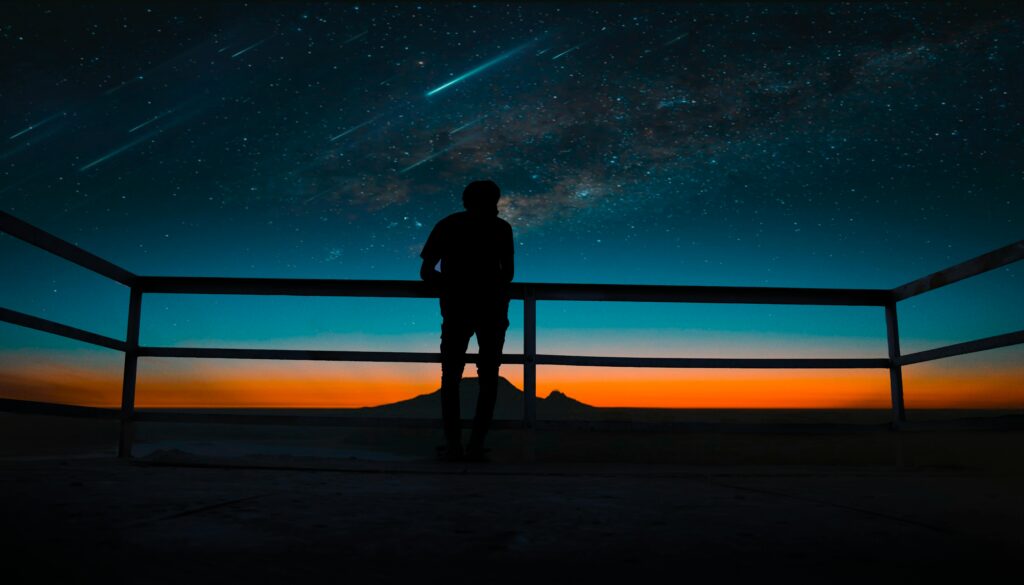
The second half of July 2025 will feature an extraordinary overlap of three meteor showers, each with its own rhythm, origin, and visual character. While one or two active showers in a month is common, having three visible at the same time, with two peaking on the same night, offers a rare chance to witness a sky alive with motion.
Alpha Capricornids
- Active: July 12 to August 12
- Peak: Night of July 29 to 30
- Visibility: Global, best around 1 a.m.
- Zenith Hourly Rate (ZHR): Approximately 5 meteors per hour
- Velocity: 22 kilometers per second (slow)
- Parent Body: Comet 169P/NEAT
While not known for volume, the Alpha Capricornids are renowned for their bright fireballs. These are slow, glowing meteors that often outshine the stars and even the Moon. Because of their brightness, they can be seen even in suburban skies. Their steady pace and striking appearance make them a visual highlight, especially when skies are dark.
Southern Delta Aquariids
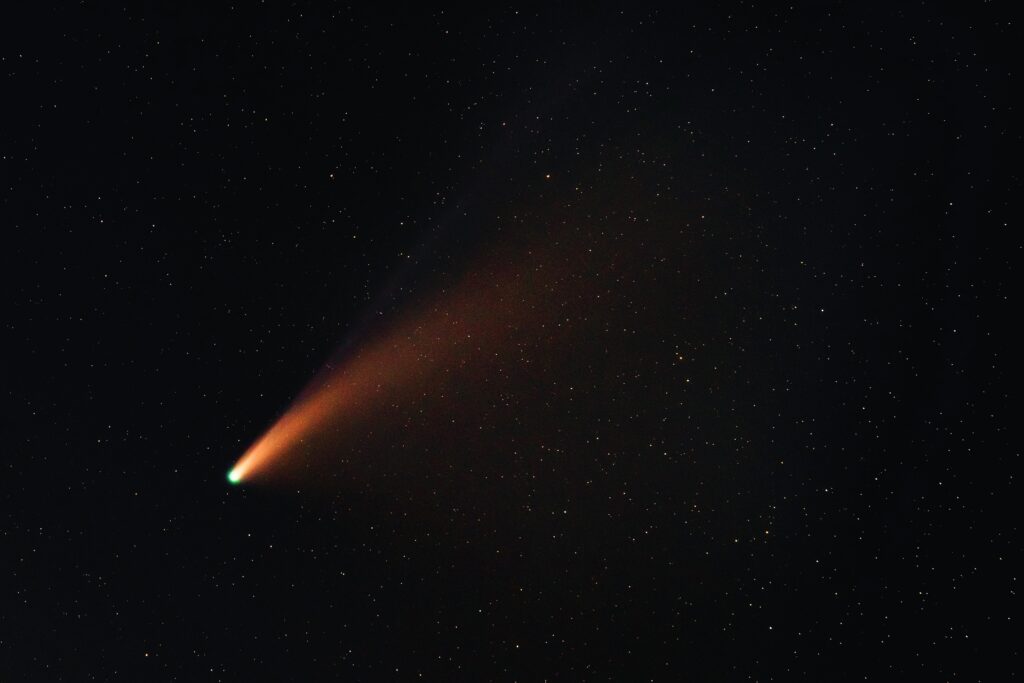
- Active: July 18 to August 12
- Peak: Night of July 29 to 30
- Visibility: Best in the Southern Hemisphere and southern United States; ideal around 3 a.m.
- ZHR: 20 to 25 meteors per hour
- Velocity: 41 kilometers per second (medium-fast)
- Parent Body: Comet 96P/Machholz
Known for their subtlety, the Southern Delta Aquariids produce fast, faint meteors that often lack persistent trails. Their beauty lies in grace rather than drama. Under dark skies, these meteors can surprise with sudden flurries. This year, with a 27 percent illuminated moon setting early, the peak viewing conditions will be especially favorable, particularly from locations with minimal light pollution.
Perseids
- Active: July 17 to August 23
- Peak: Night of August 12 to 13
- Visibility: Northern Hemisphere, best after midnight
- ZHR: 50 to 75 meteors per hour (severely reduced in 2025 due to moonlight)
- Velocity: 59 kilometers per second (fast)
- Parent Body: Comet Swift Tuttle
Often called the king of meteor showers, the Perseids are famous for their high activity rate and long, glowing trails. In rural areas under ideal skies, they can produce up to 100 meteors per hour. However, this year, a waning gibbous moon that is 84 percent full will obstruct much of the activity during the peak night, dimming all but the brightest meteors. Still, the Perseids will remain active for weeks, offering scattered bursts before and after their peak for those with patience and dark skies.
A Beginner’s Guide to Sky Gazing
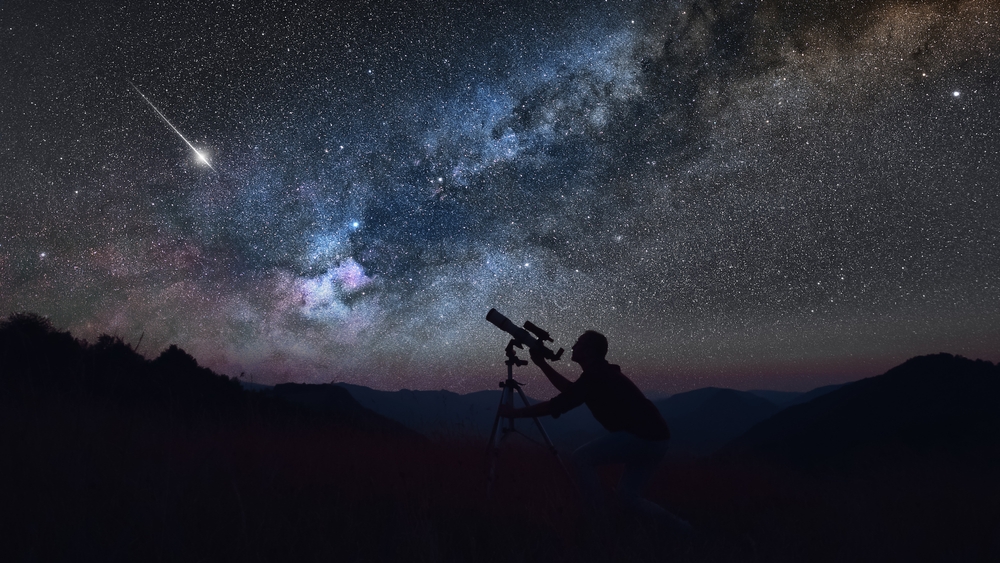
Catching a meteor shower does not require any special equipment or expertise. All it takes is a bit of preparation and a willingness to slow down. Whether you are watching from a countryside field or a quiet patch of suburban backyard, the key is to create the right conditions for your eyes and your awareness to adjust to the sky’s rhythm.
1. Find Dark Skies
The single most important factor for meteor watching is distance from artificial light. Urban areas drown out fainter meteors, so aim for a location well away from city glare. National parks, rural farmlands, and designated dark sky reserves offer the best views. If that is not accessible, even a neighborhood park with minimal lighting can make a difference.
2. Time It Right
Each meteor shower has an ideal viewing window based on when its radiant climbs highest in the sky. For the Alpha Capricornids, the best time is around 1 a.m. local time. For the Southern Delta Aquariids, it is closer to 3 a.m., when the radiant is high enough to produce consistent activity. The Perseids, especially during off-peak nights, are best observed after midnight until dawn. Always try to watch after moonset or when the moon phase is low, as moonlight can drown out fainter meteors.

3. No Telescope Needed
Your eyes are the best tool for meteor watching. Telescopes and binoculars are too narrow in field of view and will limit what you see. Instead, lie flat on your back or use a reclining chair. Give yourself at least 30 minutes to adapt to the darkness, as it takes time for your eyes to become sensitive to low light.
4. Face the Right Direction
While meteors can appear anywhere in the sky, you will see more if you are facing away from the radiant. Ideally, look about 45 degrees off the radiant’s position and halfway between the horizon and the zenith. This will help you catch longer, more impressive trails as they sweep across more of the sky.
5. Stay Comfortable and Present
Dress warmly if you are in a cooler area, and bring blankets, snacks, or even a thermos of tea. Avoid using your phone, as its light will ruin your night vision and distract from the experience. Apps like Sky Guide or Star Walk can help you orient to the stars before you settle in, but once you do, let your eyes and mind wander freely.
Reflections Under the Stars
Meteor showers are more than astronomical events. They are fleeting moments of clarity in a world that rarely stops moving. As fire streaks across the night sky, something ancient and silent speaks to us, not through language but through presence.
Each meteor is the end of a journey that began millions of miles away, long before we were here to witness it. Some are remnants of comets that have been circling the sun for centuries. Others are particles older than Earth itself. They enter our atmosphere, blaze brilliantly for a second, and vanish. Not because they were weak, but because that was their purpose.
In a world obsessed with permanence, these showers remind us of the beauty in impermanence. They teach us that a moment, however brief, can still leave a lasting impact. Brilliance does not require longevity. Wonder does not come from control but from surrendering to what we do not fully understand.
For those who pause long enough to look up, these celestial displays offer more than spectacle. They offer perspective. They remind us that we are part of something much larger. Time is vast, and our presence within it, though brief, is meaningful. Watching meteors fall is an act of connection: to the cosmos, to the planet, and to ourselves.
So as the skies light up this July, step outside. Turn off the noise. Look up. Not just to see a meteor, but to remember how much beauty exists in silence. How much meaning lives in stillness. And how sometimes, all we need is a spark in the dark to remember that we too are made of stars.
Loading...

